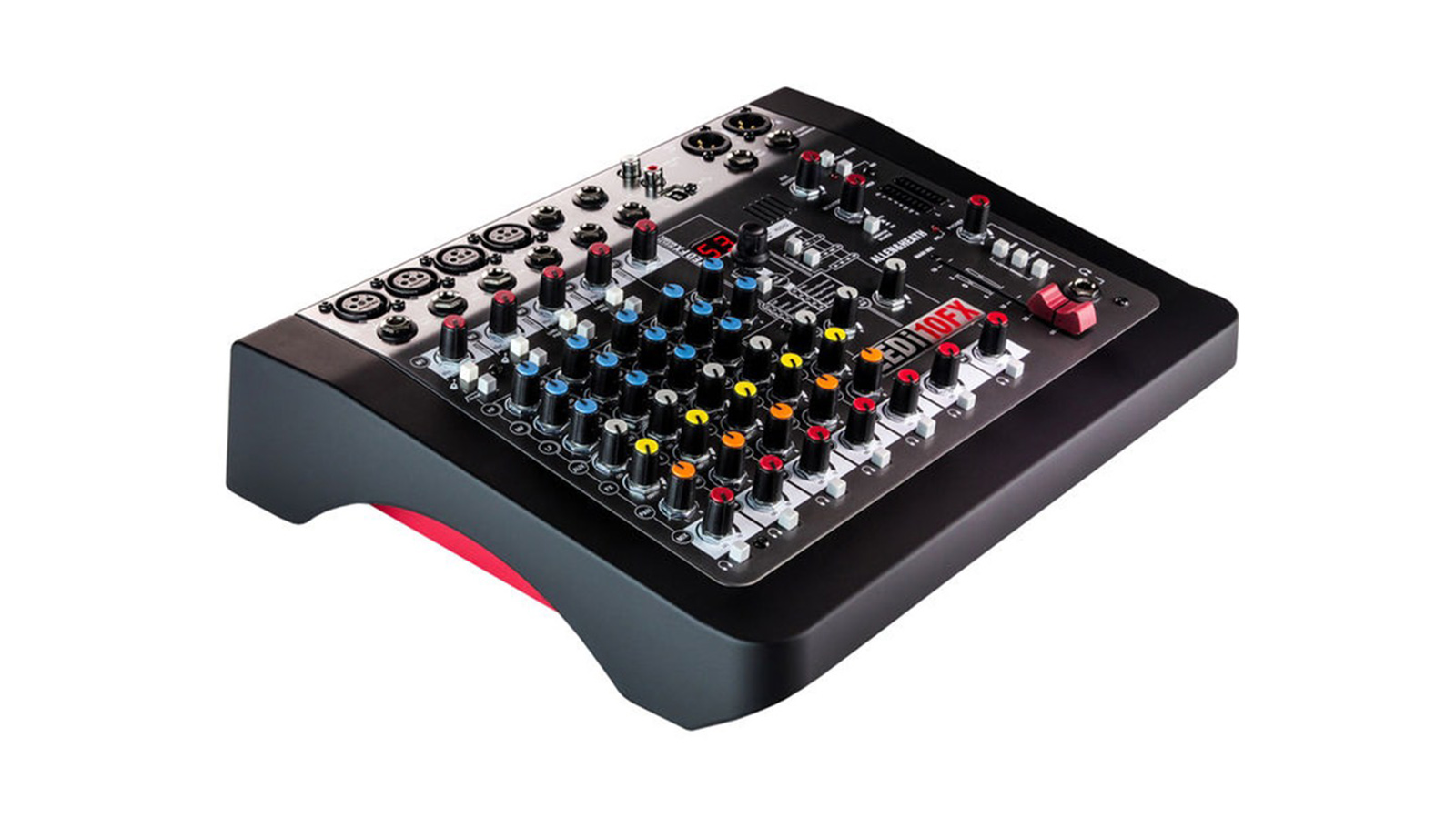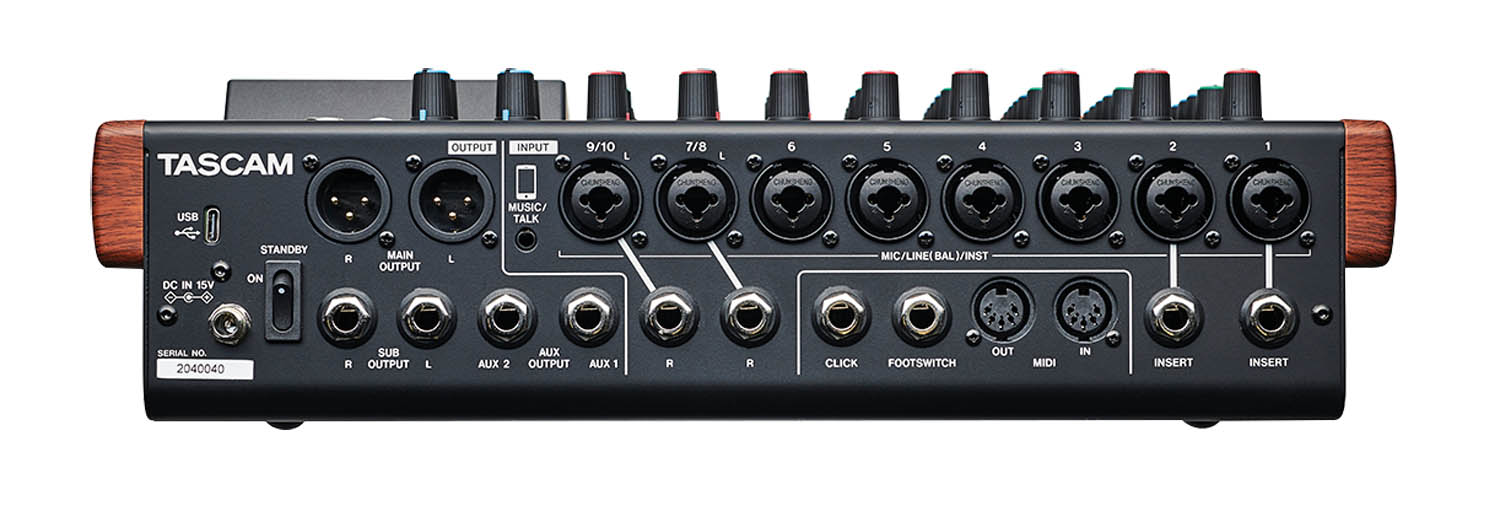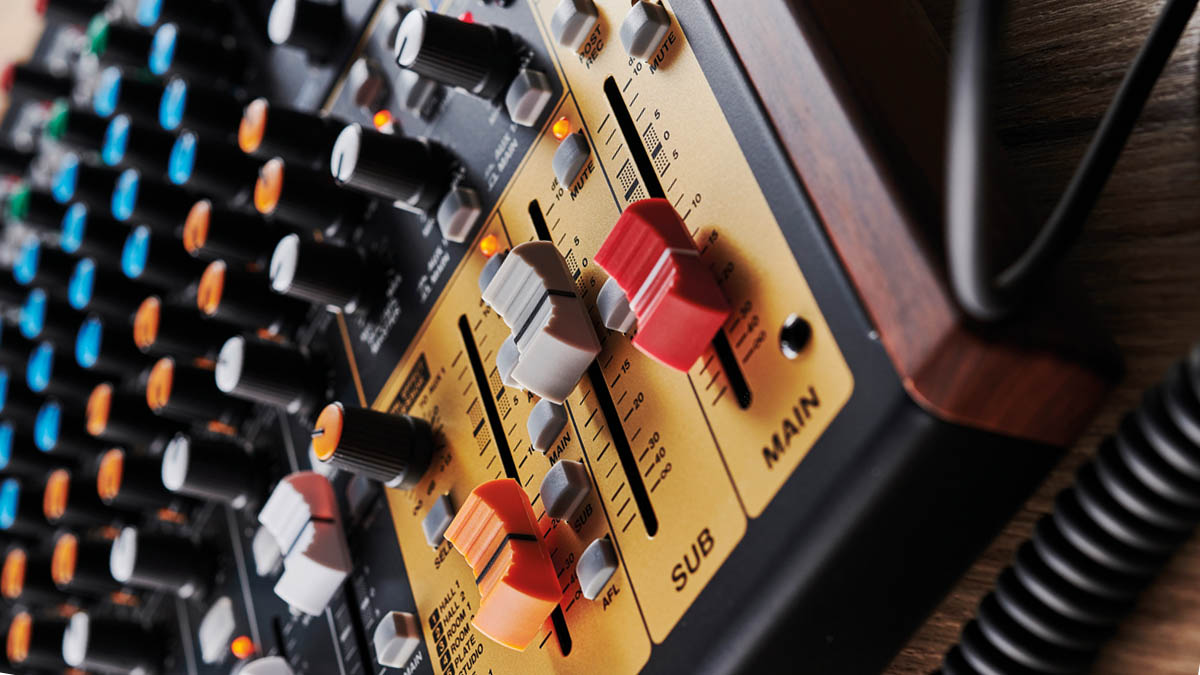MusicRadar Verdict
It looks like a regular compact mixer, but Model 12 is packed with features and is one of the best units we’ve seen at this price.
Pros
- +
Up to eight mic or instrument inputs.
- +
Two independent headphone outputs.
- +
Compressor on every channel.
- +
Mix-minus smart device integration.
- +
Proper multichannel USB interfacing with choice of signal tap points.
Cons
- -
Channel EQ could be more comprehensive.
MusicRadar's got your back
What is it?
The Model 12 is the latest addition to Tascam’s compact analogue mixer range and follows in the footsteps of last year’s Model 20 and Model 16.
Designed as a standalone mixer that also works in tandem with your DAW, it combines a mixer, USB interface (12in/10out), DAW controller (HUI/MCU protocol), onboard FX and even 12 track multitrack recorder (using SD, SDHC, SDXC). It’s crammed with features and will appeal to a broad user base.
Although Model 12 behaves primarily like an analogue mixer, the small LCD screen accesses a comprehensive menu section where you’ll find onboard multitrack functions, SD card setup, onboard metronome settings, DAW controller presets, and even various mixer settings such as channel phase invert and global solo mode (pfl, solo in place). Essentially there are plenty of extra features that aren’t immediately obvious.
The channel configuration is simple but effective with six mono and two stereo channels. However, the stereo channels both accept mono inputs (including mics), and all channel inputs accept instrument level inputs – both handy and flexible
Next up, despite its multiple functions, the mixer is laid out very much like a traditional analogue mixer, with input gain, compressor, three-band EQ, two auxiliaries, pan pot, mute, solo and fader on each channel. These are accompanied by controls such as the input source selectors (analogue input, USB return from computer or playback from SD card) and record enable.
In the master section, you’ll find three-band EQ (switchable to either main mix or auxiliaries), two main faders (main mix and sub-mix), two independent headphone feeds and the onboard FX processor that’s hard-wired to auxiliary 2. Also, here you can pair a Bluetooth device and route it to either the main output or channels 9/10.
Performance and verdict
The channel configuration is simple but effective with six mono and two stereo channels. However, the stereo channels both accept mono inputs (including mics), and all channel inputs accept instrument-level inputs – both handy and flexible. Also handy is the single-knob compressor with auto gain make up.

• Allen & Heath ZEDi 10FX
The ZEDi 10FX is well designed, well built, well equipped and is great value for money.
• PreSonus Studiolive AR8c
Despite a few compromises, the AR8c crams a lot of flexibility into a neat, well-designed mixer.
The three-band channel EQ (high and low shelves and swept mid-band) sounds good but could benefit from a Q option like the one on the master EQ. That said, there is a 100Hz low cut filter at the preamp stage, which is welcome. Also welcome are the physical inserts on channels 1 and 2.
Desk signal routing is limited to the two stereo buses (main and sub) and two auxiliaries. However, if you’re using Model 12 as a USB interface you can specify on a channel basis where the USB signal is sourced from (pre-comp, post comp, post-EQ).
Model 12 also includes a Music/Talk TRRS mini-jack on channels 9/10 providing either basic stereo input or for supported smartphones two-way audio. What’s more, this mode is mix-minus (sending the desk master mix without the phone input) making it ideal for broadcast and podcasting.

Model 12 uses Mackie Control or HUI for DAW control and in this state, some of the audio functionality of the desk is stopped. However, alongside the fader and record arm buttons, the rather regular looking channel mute and solo can also control your DAW.
For a compact analogue mixer, the Model 12’s feature set is very good. Throw in the USB interface, recorder and DAW controller and it not only delivers very broad appeal but also amazing value for money.
MusicRadar verdict: It looks like a regular compact mixer, but Model 12 is packed with features and is one of the best units we’ve seen at this price.
The web says
"It’s truly hard to find fault with anything here. The fact that the Model 12 gives you so much at such a remarkable price just makes this deal all that much sweeter. For its plethora of features, great sound, Swiss Army knife-like versatility and improvements to studio workflow and productivity, the Model 12 earns our Editors’ Pick Award."
GuitarPlayer
"There are some welcome changes to hardware. First, bar the two headphone outputs (which might have been more conveniently placed on the front edge, beneath the master fader), all of the physical input and output connections are on the rear panel; on the Model 24, they were on the top. Not only does this make for a tidier desktop and place less strain on your cables but it also reduces the amount of dust that will fall into the sockets, so should make maintenance less onerous over time."
Sound on Sound
Hands-on demos
Guitar Interactive Magazine
Pete Thorn
Specifications
- KEY FEATURES: USB interface at 44.1/48kHz 16/24-bit, 12 track multitrack recorder using internal SD card, 44.1/48kHz 16/24-bit, 10 analogue inputs including 8 mic inputs
- I/O: 1 TRRS mini jack input, 2 independent headphone outputs, 6 mono channels, 2 stereo channels, main mix and sub mix, 12in/10out, MIDI in/out, Bluetooth
- CONTACT: Tascam
Jon is a London based platinum award winning mixer, producer, composer and club remixer with a diverse CV that spans dance, pop, rock and music for media. He’s also a long term contributor to MusicRadar's music technology tutorials and reviews. Whether working alone or collaborating he usually handles final mixdowns, so you’ll also find MusicRadar peppered with his handy mixing tips.
“Excels at unique modulated timbres, atonal drones and microtonal sequences that reinvent themselves each time you dare to touch the synth”: Soma Laboratories Lyra-4 review
“I used everything I knew about music”: How Green Day exceeded expectations with their most ambitious song
YouTube just added AI tools that makes musicians, library music and video editors redundant











